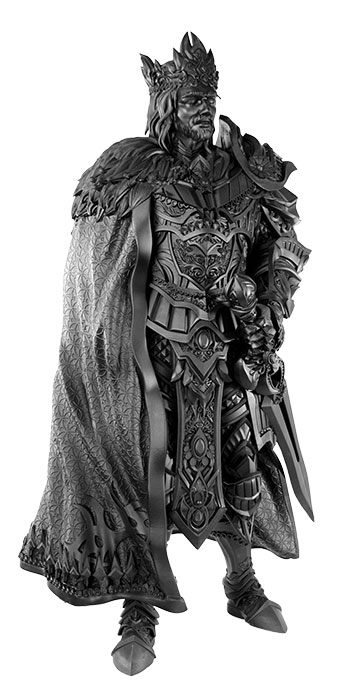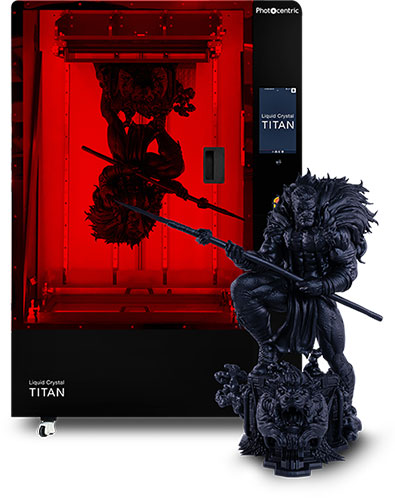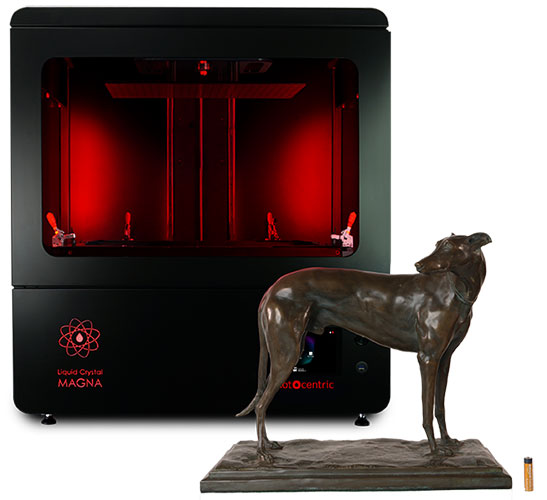3 Reasons why 3D Printing is a great choice for entertainment props and set pieces.
When it comes to delivering props and set pieces for the wide range of creative industries including TV and film, theatre productions, and theme parks, there’s been considerable evolution in the methods and technology used to produce professional props over recent years – driven largely by the growing need for more precision, flexibility, and the speed to deliver.
Traditional manufacturing such as moulding and hand sculpting methods often lead to long production timelines, high costs, and limitations for more complicated designs. These challenges are brought about by a combination of time constraints, material limitations and the availability of skilled resource to complete the job. While CNC machining can produce high volumes of output, it does require substantial capital investment, time to establish and has limitations in achieving complex geometries.
As demand for highly detailed, unique, and high-quality props grows, 3D printing has emerged as a competitive solution, combining creative design skills with advanced production capabilities. This approach ensures that creativity remains central—offering agility and iteration—while providing a fast, cost-effective production method that meets customer demands for high complexity and resolution.
Time and labour
One of the most significant pain points in the props market is the balance between quality and production speed. Traditional methods such as mould casting or sculpting by hand, are both time-consuming and labour-intensive. While they can produce high-quality props, the process can often lead to delays, or worst case, loss of business, especially when last-minute changes or a broader range of designs are requested at short notice.
Additionally, the cost and availability of labour, materials, and equipment can have a significant impact on price and commercial competitiveness, making it difficult for smaller productions or independent artists to access high-end props without breaking their budget or losing business to a competitor.
With 3D printing, significant resources can be saved across both indirect (mould development) and direct (production output) approaches, compared to traditional methods.
The freedom to be flexible and responsive with your designs
Through utilising advanced CAD software to create intricate, high resolution and complex designs, 3D print workflows encourage a more iterative approach to design, promote experimentation and enable you to make adjustments on the fly.
Whether it’s altering an existing design for a specific look or fine-tuning the size and detail of a production, having the ability to be agile, iterate and be responsive to evolving customer requirements is a great advantage – not something that’s as easy to achieve through traditional methods where moulds have been cast, materials have been worked and adjustments are hard to make without impacting the finished product, timelines or budget. 3D Printing on the other hand offers this ability.
Pushing the boundaries of what’s physically possible
Finally, another great benefit of 3D printing approaches, especially when completed through high-resolution and large-scale professional printing solutions such as LC Titan, is the ability to really push the boundaries of design complexity and create geometries that were never possible before.
Unlike traditional methods that heavily rely on expensive moulds (such as clay moulding) or manual crafting, 3D printing allows for more intricate, more complex geometric shapes and finer details. This opens a range of new possibilities and potentials for prop designers, from producing highly detailed historical replicas to unprecedented futuristic sci-fi pieces/objects that would be extremely difficult or high cost to produce through more conventional approaches.
Furthermore, with a solution like LC Titan, print volumes can be increased without losing ANY resolution. Moreover, the customization that 3D printing offers is a significant advantage for designers working on a range of projects, from theatre productions to film sets. Each prop can be tailored to the specific needs of a production, whether it’s size, texture, or colour. With 3D printing, no idea is too ambitious, and prop designers can confidently bring their most creative visions to life.

King Prop
Printer: LC Titan
Resin: DL110HB
Parts per print: 1
Print time: 102 hrs
Print Height: 102 cm
Layer Height: 100µm
Part: 7.29kg
Supports: 1.56kg
How we can help
If you’re involved in set and prop design – we’re ready to support you to unlock the benefits of 3D printing for props, set items, exhibit pieces and much more.
Interested in exploring how 3D printing can elevate your props design and production process?
Visit our application page to learn more about how Photocentric can help.
Printing Solutions for Arts & Entertainment
Photocentric LCD 3D Printers offer scalable, high-quality prototyping and production capabilities for a wide range of creative industries, with cutting-edge resolution and production efficiency.

LC Titan
Massive Build, Precision at Scale
Unlock the power of very large-scale production with the largest LCD 3D printer in the world. Featuring a massive build volume and 8k resolution, it’s designed for high-volume production with exceptional precision.

LC Magna
Versatile Medium-Sized Printing & Prototyping
Ideal for medium-scale prototyping and production, offering efficient production and 4k resolution. Perfectly complements LC Titan in a full workflow for seamless prototyping and production capability.